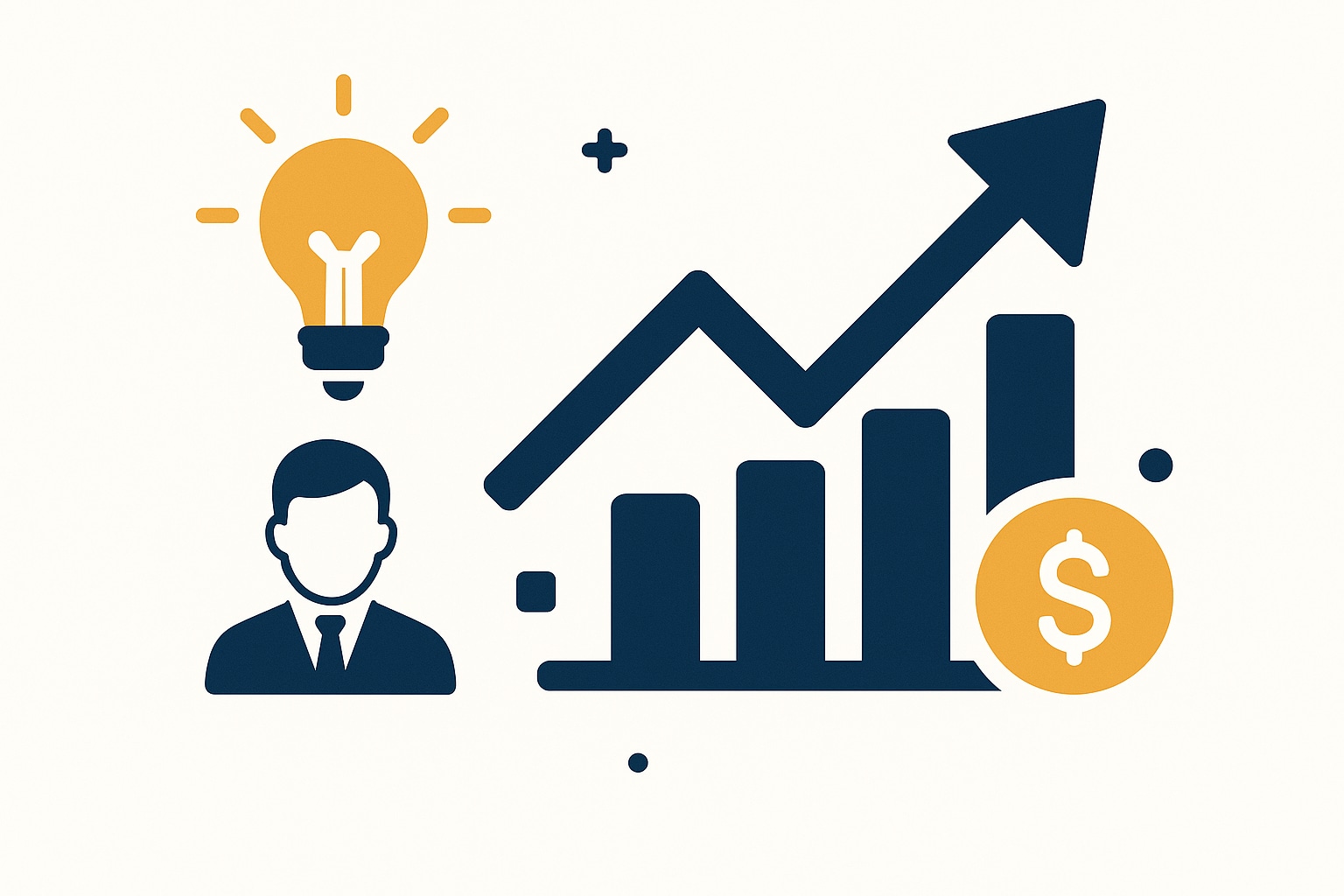When should you start investing in Performance Marketing?

First things first.
Let's clear the air about what performance marketing really is.
Performance marketing is a results-driven approach, often termed a digital marketing strategy, where advertisers pay only when specific actions are completed, such as clicks, leads, or sales. It's all about measurable outcomes and ROI, i.e. performance.

Digital marketing, on the other hand, is a broader term that encompasses all sorts of online marketing efforts, including content marketing, SEO, email marketing, and performance marketing amongst many more.
In simple terms – digital marketing is the ocean, and performance marketing is a powerful current within it. Both can take you places, but performance marketing is laser-focused on getting you to a specific destination.
Do I need to do performance marketing? When do I start?
Not a million-dollar question, or wait… is it?
Before we answer this, let's cover one more concept.
User Purchase Journey
Each user goes through a series of steps before making the final purchase. This is true across B2C, B2B, D2C and product/service categories.
Broadly you can define the journey as:
- Awareness
- Consideration
- Decision
- Purchase
- Post-Purchase
Now each user is in a different stage of the purchase journey. Each marketing campaign and channel will feed users into a different stage (more on that later).
Our focus is on Performance Marketing in this article, which drives users into the Decision and Purchase stage of the user journey.
So does that mean it does not affect the Awareness and Consideration stages?
Not entirely, but the algorithms are designed in a way to drive users to execute a certain action and then find more users like them who are likely to execute that same action - ideally, this action is the final purchase. Since these campaigns drive results towards an action - you would ideally want to maximize the outcome.
I hope this gives us a basic understanding of what performance marketing does.
So, is it the right marketing strategy for your startup?
Now, this is where it gets interesting. The answer depends on several factors:
Product vs Service
If you're selling a product, especially one with a shorter sales cycle, performance marketing can be your best friend right from the beginning. 🙂
For services, particularly those requiring longer decision-making processes, you might want to build brand awareness first through content marketing before diving into performance campaigns.
Go back to the funnel, if the natural progression of the user through each phase of the journey is slow (high value, high impact decisions) then performance marketing cannot speed up that process. This is where your content and brand strategy will help users move through the journey. Performance marketing can only target users in the journey to make a decision and purchase.
But for both, performance marketing should be supported with a regular flow of organic content, consistently. Performance marketing can’t be executed in silos.
B2B vs B2C/D2C
It is as clear as crystal that B2C and D2C businesses often find quicker success with performance marketing.
This is mostly due to the channel selection. If you're selling directly to consumers, platforms like Facebook, Instagram and Google can be gold mines.
For B2B, it's a different ball game. LinkedIn might be your go-to platform, but remember, the sales cycle is usually longer. You might need to warm up your audience with content/brand before hitting them with performance ads. Email marketing, social media, and SEO are a must to get the ball rolling.
These organic channels are definitely needed for B2C/D2C startups as well for a long-term sustainable marketing strategy, the only difference is that Performance marketing can start giving results immediately even without these, even if it is inefficient.
Pre-PMF vs Growth Stage Startup
Here’s the bitter truth – your startup stage matters. A lot.
Pre-PMF (Product Market Fit):
At this stage, you're still figuring things out. Performance marketing can be a double-edged sword. It can help you test and validate your assumptions quickly, but it can also burn through your limited resources if not done right.
The best approach is to leverage performance marketing to test your marketing message with different user profiles. The challenge is to maintain a balance between the number of campaign experiments and ad spend.
Tread carefully.
Growth stage:
If you've achieved PMF and are ready to scale, it's time to spend some bucks on performance marketing. You know your audience, you know what works, now it's time to amplify it. Focus on more creative experimentation here, each campaign should give you a learning to build the next one.
If you are not improving with each campaign, you are not doing performance marketing right.

When can I expect to see results from performance campaigns?
Ah, the most asked question!
The truth is, it varies. Some businesses see results within days, others might take months.
But here's a general thumb rule you can follow:
- Short-term results (1-3 months): Click-through rates, website traffic, lead generation, initial sales at high CAC/CPL, poor ROI
- Medium-term results (3-6 months): Consistent lead quality, sales with improving CAC/CPL even with scaleup, ROI breakeven
- Long-term results (6+ months): Positive ROI, scalable customer acquisition, brand recall
Remember, patience is key. Rome wasn't built in a day, and neither is a successful performance marketing strategy.

How much should I invest in performance marketing?
How much should you be willing to shell out? Before making any monetary commitments, consider the following factors:
Your budget
Obviously, your available funds play a crucial role.
But don't fall into the trap of thinking you need millions to start. Even a small, well-planned budget can yield results if used strategically.
When starting out, pick a budget you can sustain for 3-6 months to see the proper impact of performance marketing.
Your expectations
Are you looking for rapid growth or steady, sustainable progress?
Your goals will dictate your investment. Having clear objectives will help you a lot more than just setting budget constraints.
Min investments to see needle-moving impact
Here's the hard truth - there's no magic number. I repeat, no magic number.
It depends on your industry, competition, and target audience. However, as a ballpark figure, be prepared to invest at least $1,000-$3,000 per month for 3-6 months to start seeing significant results.
And don't forget about time investment. You'll need to dedicate substantial hours to strategy, creative development, and analysis. It's a lot more than just about throwing money at ads.
Recommended reading: We created a growth framework to help you plan your acquisition strategy, read more in our article on The Growth Trilemma.
Points to Remember
Before you delve deeper into performance marketing, keep the following points in mind:
Performance marketing is not only about running ad campaigns.
It's about spending smart. A well-thought-out $500 campaign can outperform a poorly planned $5,000 one.
You might see some immediate impact and then a slump.
Don't panic! This is normal. The initial novelty can wear off, but that's when the real optimization begins.
Performance marketing is demand capture, not demand creation, understand the difference.
You're tapping into existing demand, not creating new markets. Make sure there's a demand for your product before going all-in on performance marketing.
Performance marketing follows the Pareto principle, 20% of your campaigns will drive 80% of the results.
Focus on identifying and scaling your winners. Don't spread yourself too thin trying to make every campaign work. But to identify the 20% that do work, you will need to put in the work to execute 100% of the campaigns.
Creatives > Targeting > Budgets || Spend 90% of your time and effort on creative messaging and design quality
This is the secret sauce. Great targeting and big budgets won't save bad creatives. Invest time in crafting compelling messages and eye-catching designs which can only be solved by knowing more about your customer than the customer.
In a nutshell, performance marketing can be a game-changer for your startup. But timing is everything. So, assess your product, market, and stage carefully before taking the plunge. And when you do, remember - it's a marathon, not a sprint.
Stay adaptable, keep learning, and may the performance odds and gods be ever in your favor!
Read More
TCS's Growth and Transformation: A Comprehensive Analysis
Explore TCS's strategic growth and transformation initiatives, including revenue milestones, AI integration, and workforce evolution, shaping the future of IT services.

Understanding Growth Marketing: Strategies for Startup Success
Explore the fundamentals of growth marketing and discover strategies to drive startup success through data-driven decision-making and innovative tactics.

Understanding the Role of a Growth Marketer: Key Responsibilities and Impact
Explore the key responsibilities and impact of growth marketers, focusing on data-driven strategies for customer acquisition and retention.
Schedule a Call Today
Discuss your Growth challenges

